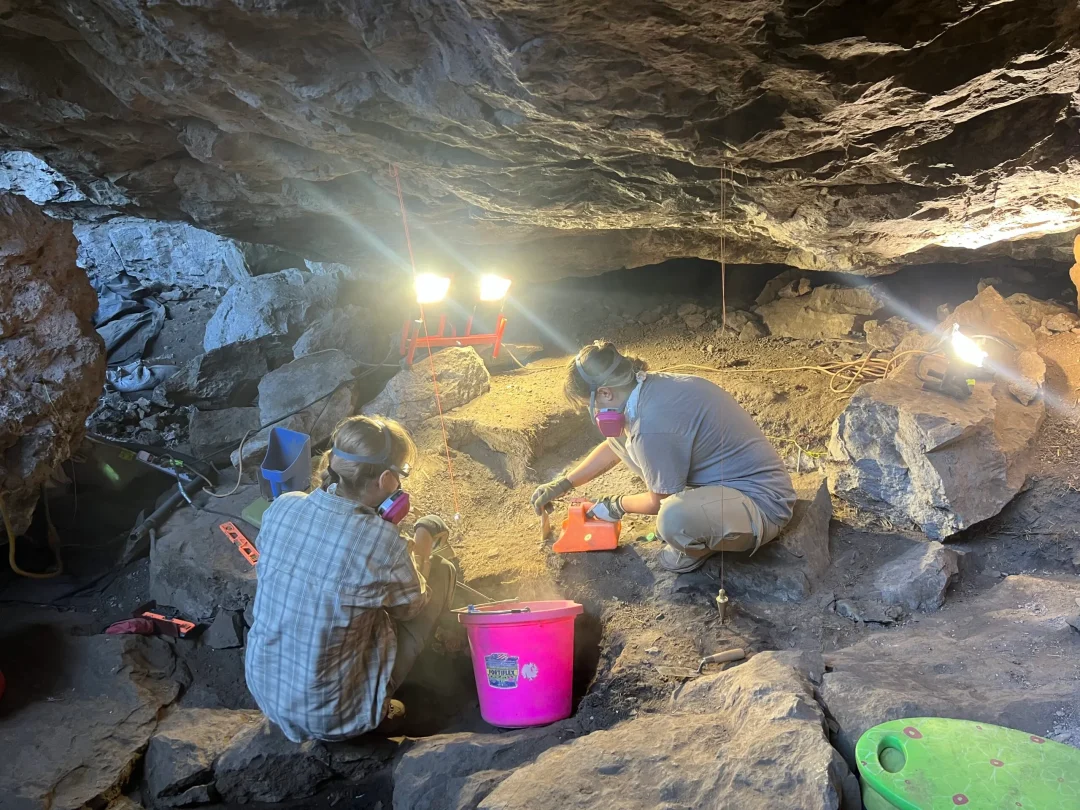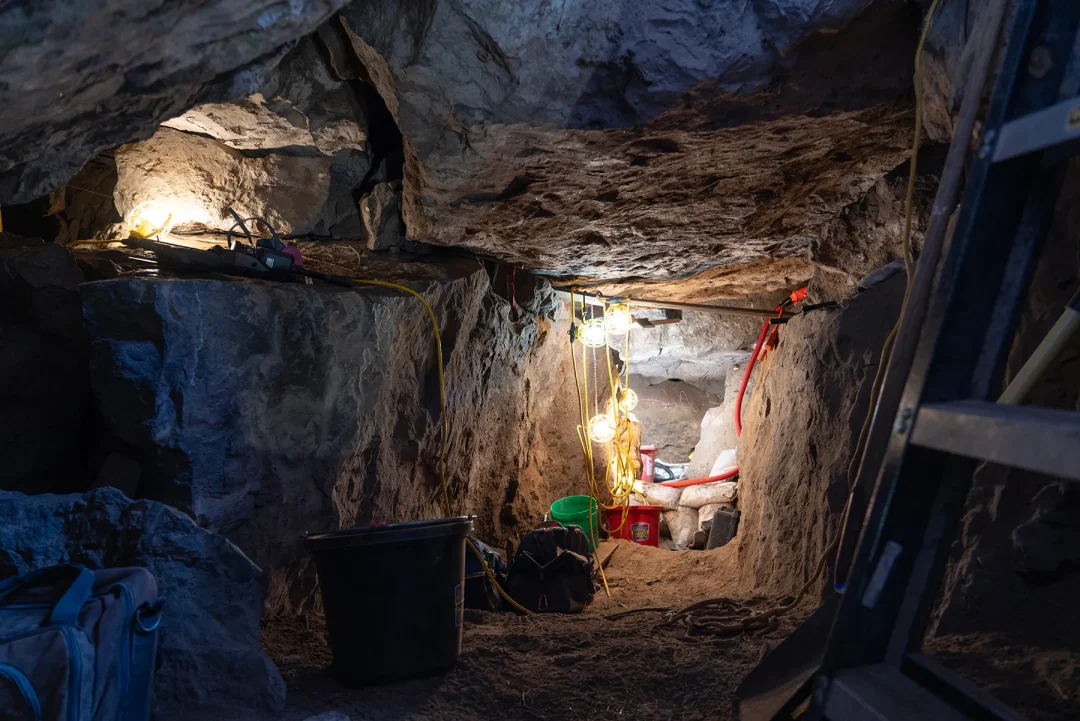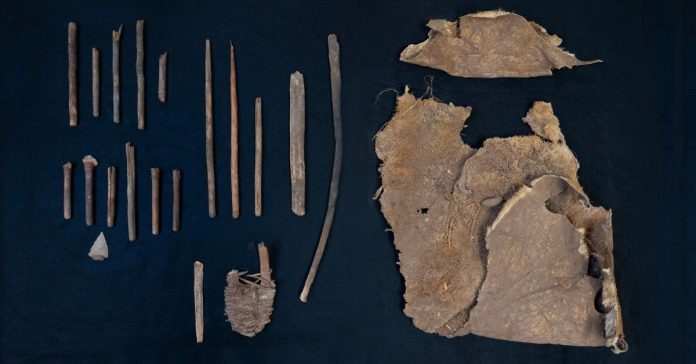Archaeologists have uncovered a remarkable collection of prehistoric hunting equipment in a remote cave near Marfa, Texas. Dating back approximately 6,500 years, the assemblage includes fragments of an atlatl (spear-throwing device), a curved wooden object resembling a boomerang, and multiple darts tipped with stone and wood. Discovered alongside remnants of a small fire and preserved fecal matter, these artifacts offer a rare window into the lives of North America’s early inhabitants. Researchers from Sul Ross State University and the University of Kansas suggest this may be one of the oldest near-intact sets of organic and stone tools ever found on the continent.

Prehistoric Survival Strategies Revealed by Texas Cave Hunting Tools Discovery
The discovery site, known as the San Esteban Rockshelter, appears to have served as a temporary shelter for ancient hunters. Evidence suggests that early humans used the cave to assess and repair damaged gear. ‘This wasn’t just a campsite—it functioned as a toolkit maintenance station,’” explained Dr. Bryon Schroeder, lead researcher at Sul Ross State University. “They’d discard broken items here while preparing for their next hunt.” Among the finds were wooden tips that may have delivered toxins to prey, highlighting sophisticated hunting techniques. The team theorizes that nomadic groups traversing the arid landscape periodically used the shelter to regroup and re-equip.
Preserved by Time: Ancient Hunting Finds in a Texas Cave
Unlike most archaeological sites, where only stone tools endure, this cave’s dry conditions preserved fragile organic materials. Researchers found sinew bindings, feather fragments, and folded antelope hide—likely part of a carrying bag—intact. ‘Organic preservation of this caliber is extraordinary,’ noted Dr. Devin Pettigrew, a weaponry specialist involved in the study. “These artifacts show the full complexity of ancient toolkits, far beyond what stone remnants alone can reveal.”

Insights from Archaeological Experts
External researchers have praised the discovery’s significance. Dr. Christopher Morgan of the University of Nevada, Reno, emphasized the importance of linking artifacts to specific behavioral contexts. “If these items truly belong to a single toolkit, it humanizes these hunters—they were strategists, planners, and masters of their environment,” he said. Dr. James David Kilby, a hunter-gatherer expert at Texas State University, added that such finds challenge misconceptions about prehistoric societies: “These tools underscore their ingenuity and deep ecological knowledge.”
Ongoing Research and Indigenous Collaboration
The researchers shared preliminary findings in the Journal of Big Bend Studies, but they are still analyzing the full data.Researchers are examining coprolites (ancient feces) to glean dietary and genetic data, pending consultation with local Indigenous communities. “Collaboration with descendant groups is essential,” Dr. Schroeder stressed. “Their input guides how we handle culturally sensitive materials.” Future publications aim to detail the weapons’ construction and the hunters’ adaptation to West Texas’ harsh climate.
How a Texas Cave Sheds Light on Ancient Hunting and Our Ancestral Past
For the archaeologists, this discovery bridges the gap between modern humans and their ancient counterparts. “These weren’t primitive people—they were problem-solvers with advanced toolmaking skills,” Dr. Schroeder reflected. The toolkit’s complexity, from poison-tipped projectiles to multi-component weapons, mirrors the resourcefulness required to thrive in a challenging landscape. As analyses continue, each artifact adds depth to our understanding of humanity’s shared heritage, proving that innovation is a timeless trait.

